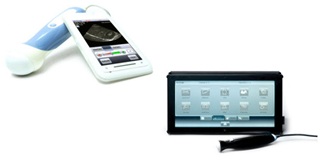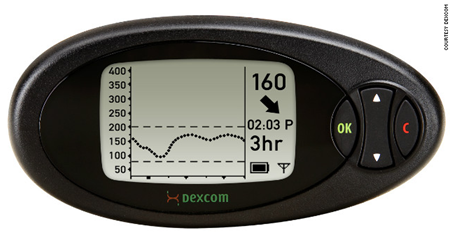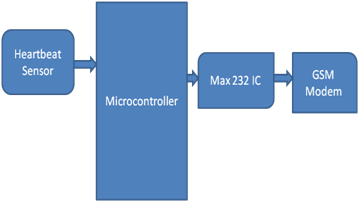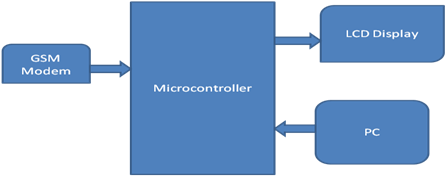Defining GSM
GSM technology stands for Global System
for Mobiles and its foundation can be credited to Bell Laboratories in
1970. It basically uses circuit switched system and divides each 200
kHz signal into 8 25 kHz time slots and operates in 900 MHz, 800 MHz
and 1.8GHz bands. It uses a narrow band transmission technique-
basically Time Division Access Multiplexing. The data transfer rates
vary from 64kbps to 120kbps.
Need for GSM in Medical Services:
Consider Two Situations:
- A person is critically injured or has fallen ill and needs to be immediately taken care of. All he or the person accompanying him has is a mobile phone.
- A patient is discharged from the hospital and thinks of taking rest at his home, but still has to go to the hospital for regular checkups. He may have a mobile phone and also some medical sensor devices like health monitoring devices.
In both the situations, the only way
which can provide a solution is by using the mobile communication
system. In other words using communication technologies any situation
like above can be handled just by transmitting the patient details
through the communication network and receiving them and processing them
at the receiver section-either a healthcare centre or at the doctor’s
home. The doctor simply monitors the patient details and gives back the
instructions to the person(in the 1st case)so that he can at least take some precautions before finally reaching the hospital and in the 2nd case monitors the test results of the patient and in case of any abnormalities, takes the next step for further treatment.
This whole situation is the telemedicine services. Telemedicine system can be used in either of the three ways.
- Using Video conferencing, where patients sitting at one place can have direct interaction with the health care providers and accordingly carry on the curing process.
- By using health monitoring sensors which keep updating about the health of the patient and accordingly guide the health care providers to carry on the treatment.
- By transmitting the acquired medical data and transmit the acquired data for consultation and processing.
For the above three ways, a wireless
communication technique is used. The medical services require many ways
of getting access to stored resources. These can be medical databases
or online hosts with devices that can help recover and monitor patient
health. Different access options are broadband network, through medium
throughput media and narrow band through GSM.
Now among all these, GSM is the most
widely used option owing to its immense popularity, improved spectrum
efficiency and low cost of implementation.
- It is more cost effective.
- GSM receivers are widely available- mobile phones and GSM modems
- It has high data transfer speed.
Basic Telemedicine System:
A basic telemedicine System consists of 4 modules:
- The Patient Unit: It collects information from the patient, sends it as an analogue signal or converts it to the digital signal, controls the data flow and transmits the data. It basically consists of various medical sensors like heart beat sensor, blood pressure monitor, skin temperature monitor, spirometry sensor etc which outputs a electrical signal and sends these signals to the processor or a controller ( a Microcontroller or a PC) for further processing of the signals and then transmits the results through a wireless communication network.
- Communication Network: It is used for data security and data transmission. The GSM technology is used which uses mobile station, base substation and the network systems. Mobile station consists of the basic mobile access point or the mobile phone and links the mobile phones with the GSM network for communication.
- Receiver Unit/Server Side: It is basically a healthcare system where a GSM modem is installed which receives and decodes the signals and sends them to the presentation unit.
- Presentation Unit: It is basically the processor which converts the data received into a well defined format and stores them, so that the doctors can regularly monitor it and any feedback to the client side can be sent via SMS from the GSM modem.
A Simple Telemedicine System
A Basic Telemedicine system can be shown
in the simplified way. It consists of two units – The transmitter unit
and the receiver unit. The transmitter unit transmits the sensor input
and the receiver unit receives this input to carry on the further
processing.
Given below is an example of a simple
telemedicine system to monitor the heart rate of the patient and
accordingly process the data.
At the transmitter unit, the heart beat
sensor (which consists of a light emitting source whose emitted light is
modulated as it passes through human blood) converts the obtained data
from human body and converts them to electrical pulses. The
microcontroller receives these pulses and processes them to calculate
the heart beat rate and sends this calculated data to the health care
unit through a GSM modem. The GSM modem is interfaced to the
Microcontroller using a Max 232 IC.
At the receiving unit, the GSM modem
receives the data and feeds it to the Microcontroller. The
Microcontroller accordingly analyzes the received data with the data
from the PC and shows the result on the LCD. This displayed result or
status of the patient can be monitored by the medical staff and
according to the status , required treatment procedure can be started.
Practical GSM working examples in medical
- AT&T Vitality GlowCaps: These are pills bottles which simply gives a reminder to a patient to take his/her medicines. It consists of a timer which is set for the patient’s pill taking time and at that time sets the cap to illuminate and starts the buzzer and then calls the patient’s mobile phone using the GSM technology. A record is made for every opening of the bottle.

- Mobisante MobiUS SP1 Ultrasound System: It consists of an mobile ultrasound probe plugged into a smartphone and transmits the handheld ultrasounding imaging to any remote place through GSM.

- Dexcom Seven Plus Continuous Glucose Monitoring (CGM) system: This is used for monitoring blood glucose levels of the patients and transmitting them to the doctor. It consists of a sensor placed beneath the skin which continuously monitors the blood glucose levels and transmits them to the receiver( a cell phone) at frequent intervals.

Future Scope of GSM in Medical Services
In accordance with a recent survey by PricewaterhouseCoopers for the GSM Association, an industry body which represents nearly 800 of the world’s mobile operators in 219 countries, GSM enabled services will become a part of healthcare system by 2017, creating a global market of 23 billion dollars.










No comments:
Post a Comment